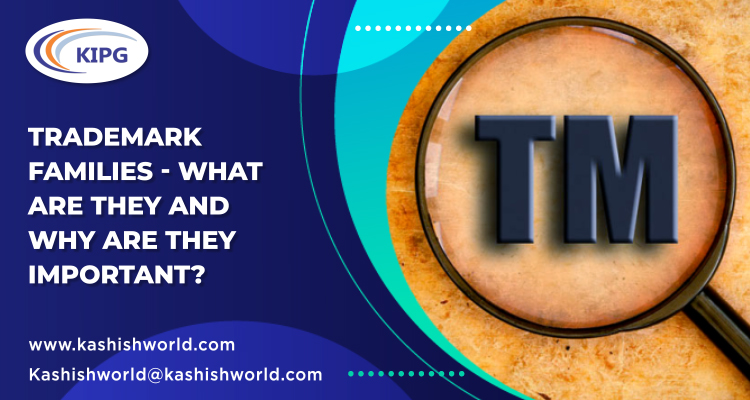
A family of marks is defined as “a group of marks having a recognizable common characteristic, wherein the marks are composed and used in such a way that the public associates not only the individual marks but the common characteristic of the family, with the trademark owner.” The common element may be a term, a phrase, or a component like a prefix or a suffix.
Perhaps the most famous family of trademarks is owned by McDonald’s. For example, McMuffin, McVeggie, McNuggets, and McCafe are all a part of a family of trademarks owned by McDonald’s. Another example is Toys”R”Us, which owns a family of trademarks that includes Babies”R”Us, Rewards”R”Us, and an “R”Us credit card. The common characteristic does not always have to be a prefix or suffix, but it does have to be distinctive.

One of the prime ways to receive trademark family status is through advertising. Trademark Law rewards companies that advertise their family of trademarks in such a way that the public will recognize the family of marks as identifying a specific product or service of a specific company.
Once the family of trademarks has been established, trademark law then prevents others from using the surname mark for related goods or services.
The Essential Characteristics of a Family of Marks
A family of trademarks is a group of trademarks that:
(1) Has a recognizable common characteristic;
(2) Is distinctive; and
(3) Is used so that the purchasing public recognizes the common characteristic to indicate that the trademark owner is the common origin of the goods or services.
What is the Need for Family of Trademarks?
Filing for trademark families means wider protection and a sharing of goodwill between products. Family marks can promote a positive image of the belief of quality and authenticity that can remove some of the barriers to purchasing unknown products or services. The total protection afforded by a family of trademarks may be greater than the sum of the trademarks in the family.
In the case of Ponte Finanziaria SPA vs. OHIM, it was held that a mark’s membership of a ‘family’ of registered marks (i.e., all of which contain a common element) might enhance its distinctiveness, provided that a sufficient number of marks has been used.
Furthermore, each successive trademark strengthens the original or root brand. Every time McDonald’s launches a new product with the “Mc” name, it further strengthens the McDonald’s brand and discourages creeping infringement by a competitor or anyone who would use “Mc” in a brand. Each successive trademark also has more immediate recognition, inquisitiveness on the part of consumers, and distinctiveness. The consuming public will more quickly associate the goods with the original brand and the family of trademarks. They can be a good way to strengthen and expand a brand if the owner understands them and their use.
Challenges
In the presence of a family of trademarks, a likelihood of confusion may arise from the possibility of associating a trademark to the same family if the mark in question is similar to the family of trademarks in a way that would lead consumers to believe that it is part of that family of trademarks.
For instance, in 2016, the EU Court of Justice observed the MacCoffee brand, belonging to an owner other than McDonald’s, could be wrongly associated with the “Mc” family of marks by a consumer. Further, it was established that the difference between “Mac” and “Mc” was immaterial because the two prefixes were almost identical and that the structure of the MacCoffee brand was very similar to that of the brands belonging to the “Mc” family, as characterized by the same position and by an identical conceptual content.
The fact of having a trademark that is recognized as similar to a family of trademarks (belonging to a different owner) is an issue since the law wants to avoid the consumer being misled by the similarity and mistakenly imagining a connection between the two parties’ products (or services) The existence of a family of brands characterized by the amalgamation of the prefix “Mc” with the name of a menu or of food products was recognized. The Court stated that the prefix “Mc” was largely associated with the McDonald’s brand and that the same prefix, in combination with another word, was associated with fast food establishments belonging to the group or to products related to the latter.
It is necessary to bear in mind that the family of trademarks is recognized only if its owner uses and can demonstrate the use – of all or a good part of the brands, which are part of the family.
Not Every Combination is a “Family”
In the case of Consolidated Foods Corp. vs. Sherwood Medical Ind., Inc., the opponent owned over 45 registrations for marks such as CREAMSICLE, FUDGSICLE, FRUITSICLE, etc., and the Appellate Board did not find that it owned a family of “SICLE” marks.
In the case of Optimize Technologies, Inc vs. Hitachi High-Technologies Corp., Hitachi’s application for the trademark ‘OPTICROSS’ was refused on the ground that it was likely to confuse with the OPTI trademark and six other OPTI-formative marks owned by Optimize Technologies, Inc. It was held that the mere existence of similar registrations does not establish a family, but rather there must be some recognition by the public that the shared characteristic is indicative of a common origin.
In the European Union, two important conditions must be satisfied for trademarks to be considered a family of marks:
- The proprietor must submit proof of use of at least three marks capable of constituting a series; and
- The trademark applied for must:
- Be similar to the marks belonging to the series; and
- Display characteristics capable of associating it with the series. Such association must lead the public to believe that the contested trademark is also part of the series (i.e., the goods/services could originate from the same or connected undertakings).
Hence, it is imperative to ensure that the public recognizes that the shared characteristics or prefix or suffix of the potential family of marks indicate a common origin.
Final Remarks
The key to creating a legally recognized family of marks is to create common exposure of the marks and recognition of common ownership based upon the common term appearing in each mark. Simply using a sequence of marks that share a common term does not establish the existence of a legally protectable family of marks; there must be recognition among the purchasing public that the common term or characteristic is associated with the same source.
The ultimate benefit of registering a family of trademarks is that, once legally recognized, the trademark owner can successfully enforce its family of marks against competitors’ marks incorporating the common ‘family term’ (for example, “Mc”). In effect, the common term seen in each of the family marks becomes known to customers as an identifying trademark and a particular source indicator — in and of itself when it is seen in any composite mark.

